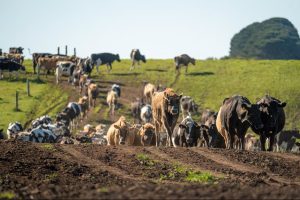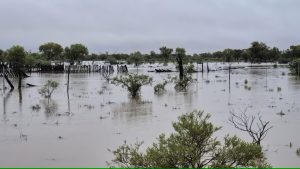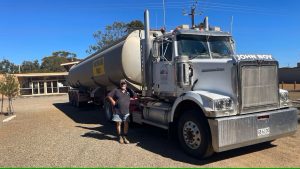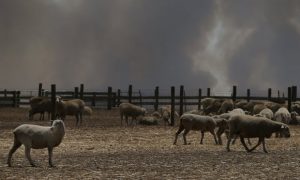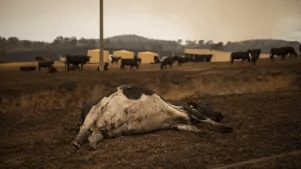
Key points:
The lowest number of livestock in a decade have been exported from Darwin this year
Only about 230,000 head, just over half the yearly average, will leave the port in 2023
High prices and limited supply resulted in Indonesian customers varying the type of livestock sought
For the past decade, an average of about 400,000 cattle and buffalo per year have left Darwin Port.
This year, however, it is is estimated just 230,000 head will be exported, including 220,000 cattle and 10,000 buffalo — the lowest number exported from Darwin in a decade.
Bondstock Rural Exports director Colin Webb said 2022 had been “up there” as one of the most challenging years for the industry in his 20-year career.
“The trade’s still open and we’re still punching away, but it’s tough,” he said.
“It’s tough to get cattle to our clients and for them to make some money and be profitable as well.”
While producers have enjoyed strong cattle prices, as high as $5.50 per kilogram live weight in early 2022, it has meant a particularly difficult year for the export industry.
“We’re still on historically high cattle prices. The oil price early in the year didn’t help us with freight,” Mr Webb said.
“So we’ve done the best we can for our for our clients, but we’re looking, hopefully, for some relief soon to get some better trading.”
Foot-and-mouth, lumpy skin disease concerns
Alongside high oil and cattle prices, biosecurity concerns impacted exports from Australia.
Outbreaks of foot-and-mouth disease and lumpy skin disease in Indonesia saw the trade slow significantly across the country in the middle of the year.
Northern Territory Livestock Exporters Association (NTLEA) chief executive officer Tom Dawkins said it had been a “stop-start type of year”, but exports had begun to ramp up again to finish it off.
“There’s always a bit of momentum to get cattle on the ship to Indonesia before it gets too wet in the Top End, and that’s the way it’s lined up for this year,” Mr Dawkins said.
“November was a reasonable sort of uptick, and December will be busier again on that, which is encouraging.”
Mr Dawkins expected about 30,000 livestock to leave Darwin in December, close to the long-term December average.
“It’s a difficult trading period still for everyone,” he said.
“The trade is still operating in the mid-gear range rather than top-gear and revving all cylinders.”
But Mr Dawkins believed there was still some “enthusiasm and optimism about the coming months” in the industry.
Industry evolving with challenges
With ongoing high cattle prices and limited supply, Mr Dawkins said what customers in Indonesia were looking for in their livestock had changed.
“The shape of the trade has changed,” he said.
“There’s been a bigger variety of animals traded — some older animals, some heavier animals.
“And I think that’s been important because they’ve been able to inject a bit of profitability into the balance sheet.”
He anticipated the changing demand would continue into 2023.
“Indonesia is being forced to look at alternatives and I think that will stay with us, even if we get a better supply of these traditional Indonesian-type cattle next year and thereafter.”
Exporters ‘determined’ going into 2023
As the industry looked to 2023, Mr Dawkins said it was difficult to say where prices and demand would land, but he was positive about the industry’s future.
“It’s a tricky job to know what’s coming next year.
“But I can tell you that the commercial operators here, they’re pretty determined and they’re always quite upbeat about what’s coming around the corner.”
And while Mr Dawkins said it would be “foolish” to say prices would not return to highs of $5.50/kg in the new year, Mr Webb was hopeful the price would ease.
“The price is dictated by a few different factors … but our clients would like a bit of a reprieve, a little bit less price, so we’re gonna see what happens.”





